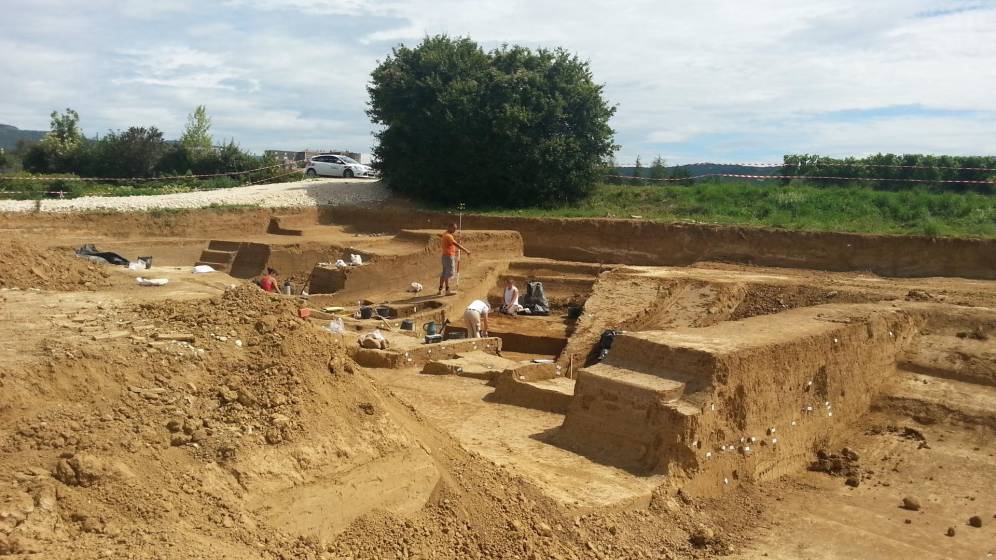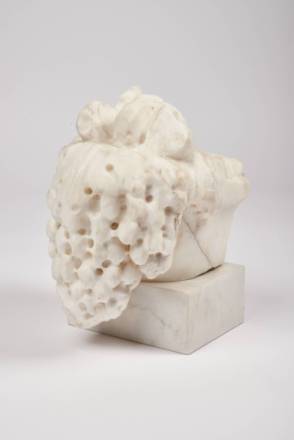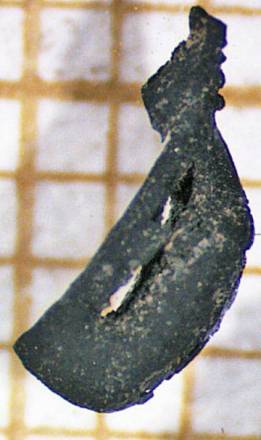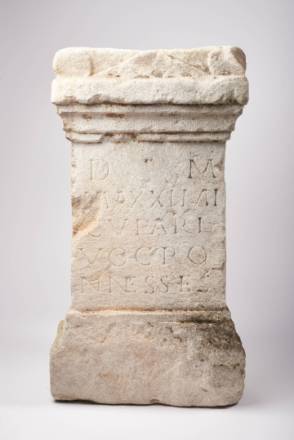The two curators, Audrey Saison, archaeologist, and Caroline Daviaud, cultural mediator, revisit this 100% Ardéchois archaeological event.
How did this exhibition project come about?
Audrey Season: The starting point is an archaeological discovery made by the
Inrap
in 2014 on the site of the Grande Terre in Alba-la-Romaine, as part of the development of a subdivision. The results are so rich in wine history that we wanted to share them with the public through a temporary exhibition.
The excavation revealed a hollow path from the 5th century B.C. that had been detected during the diagnosis. The archaeologist responsible for the excavation (
Inrap
), continued the study and identified several traces of improvements. But he especially had the idea of doing bioarchaeological analyses on charcoal and seeds collected on both sides of this path. The morphometry of wood coals (eco-anatomical measurements) has made it possible to identify vines grown.
Chemical studies in unfinished Gaulish ceramics revealed traces of red wine, white wine and grape juice. This shows that there was a Gallic vineyard here as early as the 5th century BC! We know that the Gauls were fond of wine, imported from Greece, Italy or Marseilles, but from there to find testimonies of the cultivation of the vine from this early date, in lands so far from the coast, it is a very nice discovery for the history of wine and especially for the history of wine in Ardèche!
Marble grape cluster discovered in Alba-la-Romaine. Private collection. © Nicolas Franchot
The exhibition is labeled «Inrap is 20 years old!». What are the links of this exhibition with the Institute?
Caroline Daviaud: The Inrap is a member of the scientific committee of the exhibition. We have done a lot of work with the researchers at the Institute, particularly around the excavation of the Great Earth, on the selection of objects and public awareness of the scientific approach and specialties such as anthracology, carpology, palaeogenomics... We want to show in a clear and simple way that from a grape seed, a coal, a ceramic fragment, it is possible to rewrite the history of the vine. There is also a small “carpology” module in the exhibition in which visitors are invited to distinguish, using a microscope, a grape seed from a lentil or a grain of wheat. Two 3D printed pips, which grow more than 600 times, can also differentiate between a cultivated grape seed and a wild grape seed. The Inrap has helped us a lot on these aspects and, throughout the exhibition, a series of conferences will host archaeologists, including the person responsible for the excavations of the Grande Terre site. Our relationship with the Institute is ancient and formalized by a convention.
Charred grape seed from the excavation of Grande Terre. © Manon Cabanis, Inrap
Was Ardèche wine famous in antiquity?
Audrey Season: The wine produced in the region had to be known. In the 1st century, Pliny the Elder evokes the Carbunica grape variety created in Alba-la-Romaine and distributed throughout the province of Narbonnaise. This is an interesting element that attests to the dynamism of ancient viticulture in Ardèche. In Lyon, inscriptions also indicate the activity of the boatmen (boatmen) including a certain Marcus Inthatius Vitalis, a wine merchant, who had a special recognition at Alba-la-Romaine, of which he was an honorary citizen. This shows close commercial relations with Lyon, along the Rhodanian axis. We also show for the first time to the public an ancient inscription that mentions the presence of coopers in the nearby village of Rochemaure. These records are very rare and prove that the wine was transported not only in amphoras, but also in barrels, which are not found during the excavations because the wood is putrescible and can hardly be preserved.
© Nicolas Franchot
Partager la page



